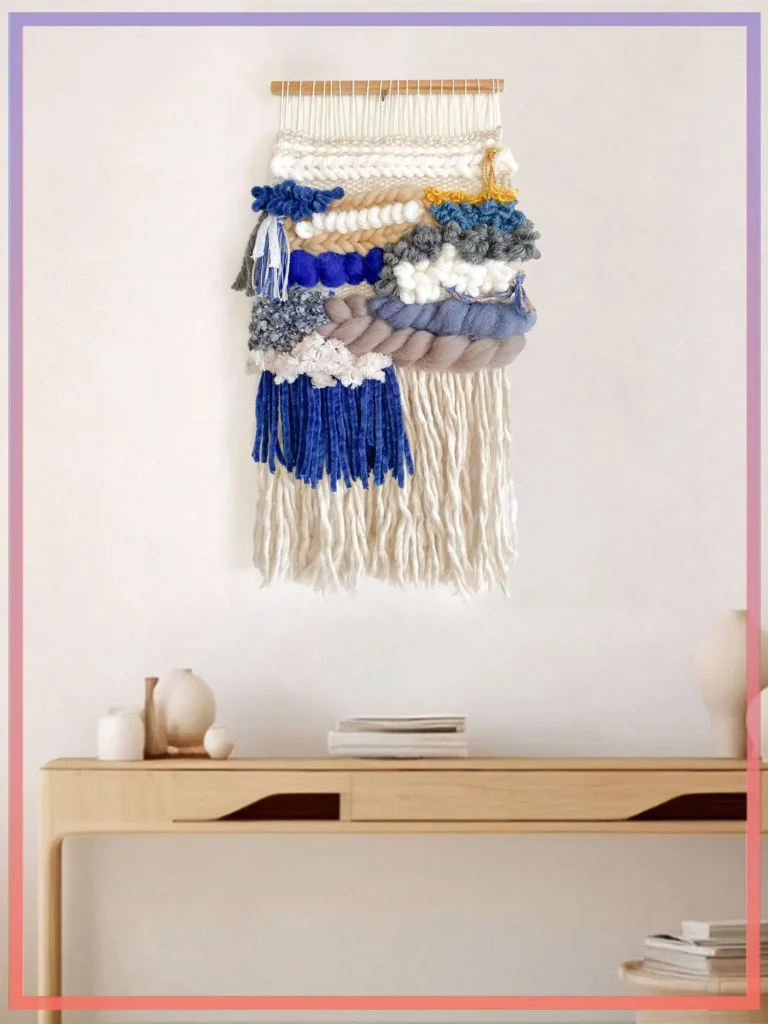News
Inside the Studio: How Handwoven Wall Hangings Are Made
Introduction
The growing demand for handcrafted home décor has spotlighted the artisans who bring these items to life. Behind every handwoven wall hanging is a story of tradition, patience, and meticulous artistry. For those curious about how these beautiful pieces are made, this article takes you inside the studio of a weaver—from sourcing fibers to finishing the final fringe.
Step 1: Concept & Inspiration
Every design begins with a concept. This could be drawn from:
-
Natural landscapes (mountains, seascapes, forests)
-
Cultural symbolism (tribal patterns, sacred geometry)
-
Personal stories (birth of a child, a travel experience)
Some weavers sketch ideas first, while others allow the piece to evolve organically as they work.
Step 2: Selecting Materials
The heart of a wall hanging is its fiber. Artisans often use:
-
Wool – Durable, soft, and warm
-
Cotton – Smooth, breathable, and ideal for structure
-
Jute or Hemp – Adds rough texture and visual weight
-
Silk or Bamboo – For subtle sheen or softness
Natural dyes are often chosen for environmental and aesthetic reasons. Many artisans even dye their own yarns using onion skins, indigo, turmeric, or walnut husks.
Step 3: Warping the Loom
The loom is prepared by stretching the vertical threads (warp) tightly across its frame. This step determines the size and shape of the final piece.
The tighter the tension, the cleaner the lines—though some designs intentionally incorporate looseness for flow or movement.
Step 4: Weaving the Tapestry
Using various techniques, the artisan inserts horizontal threads (weft) into the warp. This can take hours—or days—for larger or more intricate pieces.
Techniques may include:
-
Rya knots for fringe and texture
-
Soumak for raised designs
-
Tapestry weaving for detailed images or gradients
The artisan may incorporate natural elements like driftwood, shells, or beads as they go.
Step 5: Shaping & Layering
Modern wall hangings often feature three-dimensional textures and asymmetrical shapes. This is done by layering threads, pulling them tightly or loosely, and combining materials with varying thickness.
Color blending is also key. For example, to create a gradient sky, a weaver may blend several shades of blue, inserting them randomly to achieve a natural flow.
Step 6: Finishing Touches
Once the weaving is complete:
-
The ends are secured with knots or stitching.
-
Fringes are trimmed, braided, or left raw depending on style.
-
Wooden dowels or rods are attached for hanging.
Some artisans sign or tag their pieces discreetly with a sewn-in label.
Step 7: Packaging and Presentation
A final quality check ensures there are no snags or loose threads. Then the piece is carefully wrapped—often with a personal thank-you note—and boxed for shipping.
Sustainability-conscious studios use recyclable or compostable packaging to align with their eco-friendly values.
Why Handmade Matters
Understanding the process behind a handwoven wall hanging adds meaning to the finished product. What may look like a simple textile is, in fact, a composition of technique, vision, and care. Each piece carries the time, skill, and soul of its maker—something mass-produced décor can never replicate.
Conclusion
From concept to fiber to finished fringe, handwoven wall hangings are labors of love. They remind us that beauty takes time and that what we choose to hang on our walls can reflect not just our taste—but our values. By choosing handmade, we invest in tradition, creativity, and sustainable artistry.

